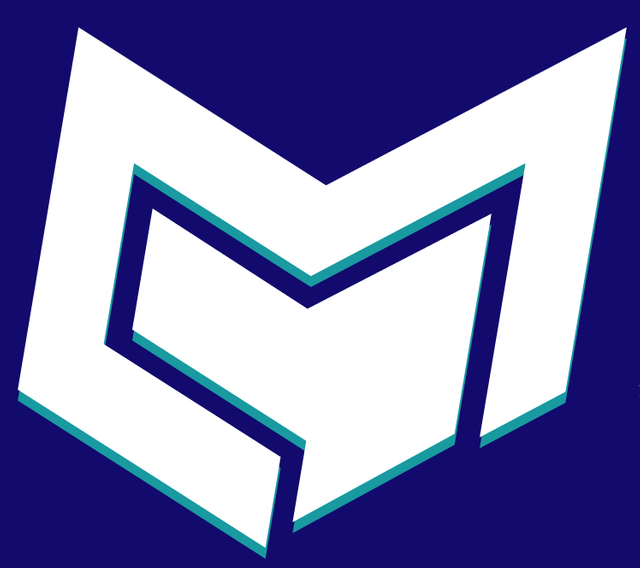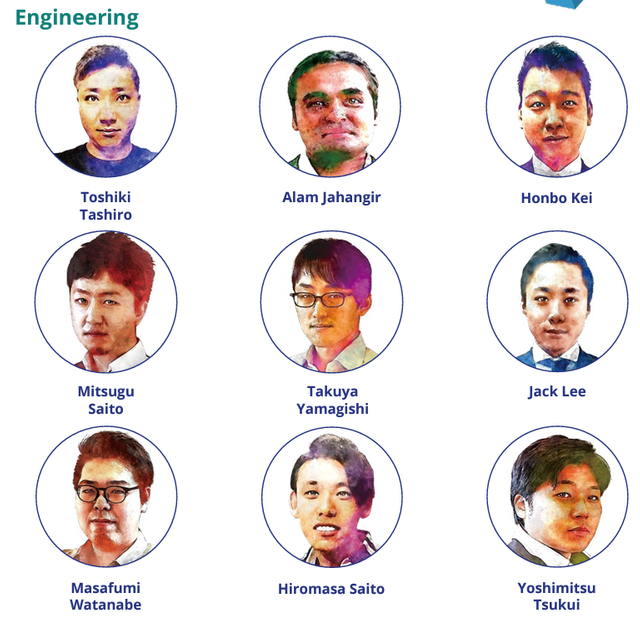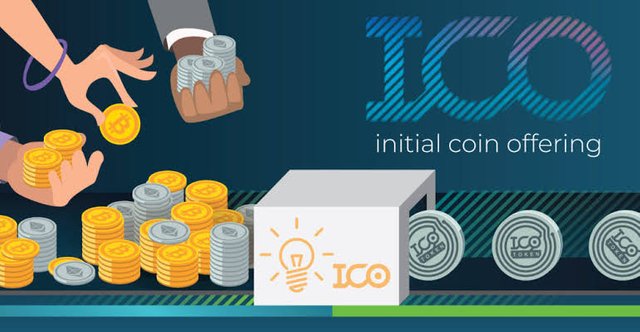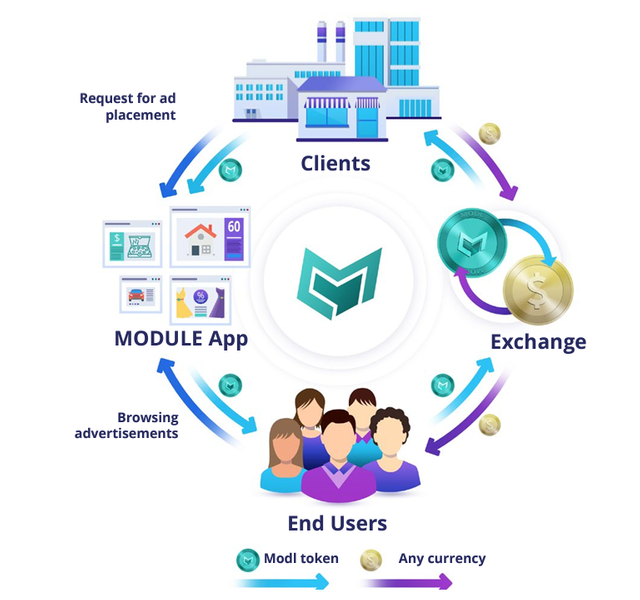MODULE PROJECT (( JAPANESE BLOCKCHAIN 4.0 ICO 2018))-CRYPTOECONOMIC ECOSYSTEM ON A CLOUD STORAGE NETWORK

I welcome you all once again to this Wonderful CRYPTOCURRENCY NETWORK BLOG, as usual ! all of you know's, I always carry you along with any information about good crypto related projects through my blog.
File sharing is the practice of distributing or providing access to digital media, such as computer programs, multimedia (audio, images and video), documents or electronic books. File sharing may be achieved in a number of ways. Common methods of storage, transmission and dispersion include manual sharing utilizing removable media, centralized servers on computer networks, World Wide Web-based hyperlinked documents, and the use of distributed peer-to-peer networking.
.jpg)
TYPE OF FILE SHARING
Peer-to-peer file sharing:Peer-to-peer file sharing is based on the peer-to-peer (P2P) application architecture. Shared files on the computers of other users are indexed on directory servers. P2P technology was used by popular services like Napster and Spotify. The most popular protocol for P2P sharing is BitTorrent.
File sync and sharing services:Cloud-based file syncing and sharing services implement automated file transfers by updating files from a dedicated sharing directory on each user's networked devices. Files placed in this folder also are typically accessible through a website and mobile app, and can be easily shared with other users for viewing or collaboration. Such services have become popular via consumer-oriented file hosting services such as Dropbox and Google Drive.
rsync is a more traditional program released in 1996 which synchronizes files on a direct machine-to-machine basis.
Data synchronization in general can use other approaches to share files, such as distributed filesystems, version control, or mirrors.
Files were first exchanged on removable media. Computers were able to access remote files using filesystem mounting, bulletin board systems (1978), Usenet (1979), and FTP servers (1985). Internet Relay Chat (1988) and Hotline (1997) enabled users to communicate remotely through chat and to exchange files. The mp3 encoding, which was standardized in 1991 and substantially reduced the size of audio files, grew to widespread use in the late 1990s. In 1998, MP3.com and Audiogalaxy were established, the Digital Millennium Copyright Act was unanimously passed, and the first mp3 player devices were launched.
In June 1999, Napster was released as an unstructured centralized peer-to-peer system,[1] requiring a central server for indexing and peer discovery. It is generally credited as being the first peer-to-peer file sharing system.
.jpg)
Gnutella, eDonkey2000, and Freenet were released in 2000, as MP3.com and Napster were facing litigation. Gnutella, released in March, was the first decentralized file sharing network. In the gnutella network, all connecting software was considered equal, and therefore the network had no central point of failure. In July, Freenet was released and became the first anonymity network. In September the eDonkey2000 client and server software was released.
In 2001, Kazaa and Poisoned for the Mac was released. Its FastTrack network was distributed, though unlike gnutella, it assigned more traffic to 'supernodes' to increase routing efficiency. The network was proprietary and encrypted, and the Kazaa team made substantial efforts to keep other clients such as Morpheus off of the FastTrack network.[citation needed]
In July 2001, Napster was sued by several recording companies and lost in A&M Records, Inc. v. Napster, Inc. In the case of Napster, it has been ruled that an online service provider could not use the "transitory network transmission" safe harbor in the DMCA if they had control of the network with a server.
Shortly after its loss in court, Napster was shut down to comply with a court order. This drove users to other P2P applications and file sharing continued its growth. The Audiogalaxy Satellite client grew in popularity, and the LimeWire client and BitTorrent protocol were released. Until its decline in 2004, Kazaa was the most popular file sharing program despite bundled malware and legal battles in the Netherlands, Australia, and the United States. In 2002, a Tokyo district court ruling shut down File Rogue, and the Recording Industry Association of America (RIAA) filed a lawsuit that effectively shut down Audiogalaxy.

Demonstrators protesting The Pirate Bay raid in 2006
From 2002 through 2003, a number of BitTorrent services were established, including Suprnova.org, isoHunt, TorrentSpy, and The Pirate Bay. In 2002, the RIAA was filing lawsuits against Kazaa users. As a result of such lawsuits, many universities added file sharing regulations in their school administrative codes (though some students managed to circumvent them during after school hours). With the shutdown of eDonkey in 2005, eMule became the dominant client of the eDonkey network. In 2006, police raids took down the Razorback2 eDonkey server and temporarily took down The Pirate Bay.
“The File Sharing Act was launched by Chairman Towns in 2009, this act prohibited the use of applications that allowed individuals to share federal information amongst one another. On the other hand, only specific file sharing application were made available to federal computers” (United States.Congress.House). In 2009, the Pirate Bay trial ended in a guilty verdict for the primary founders of the tracker. The decision was appealed, leading to a second guilty verdict in November 2010. In October 2010, Limewire was forced to shut down following a court order in Arista Records LLC v. Lime Group LLC but the gnutella network remains active through open source clients like Frostwire and gtk-gnutella. Furthermore, multi-protocol file sharing software such as MLDonkey and Shareaza adapted in order to support all the major file sharing protocols, so users no longer had to install and configure multiple file sharing programs.[citation needed]
On January 19, 2012, the United States Department of Justice shut down the popular domain of Megaupload (established 2005). The file sharing site has claimed to have over 50,000,000 people a day. Kim Dotcom (formerly Kim Schmitz) was arrested with three associates in New Zealand on January 20, 2012 and is awaiting extradition. The case involving the downfall of the world's largest and most popular file sharing site was not well received, with hacker group Anonymous bringing down several sites associated with the take-down. In the following days, other file sharing sites began to cease services; Filesonic blocked public downloads on January 22, with Fileserve following suit on January 23.
In reference with the motion of this article, Today! I will be presenting you a particular undisputed project called: MODULE
WHAT IS #MODULE?
.png)
.jpg)
.png)
Module is a blockchain-based platform designed to utilize the free storage of smartphones, PCs, servers, etc. as an asset. Using the MODULE platform, one will be able to participate in mining even from a smartphone. Servers and enterprises can also participate in mining. Module’s consensus (mining) algorithm makes it possible to earn rewards by lending out storage space. As the storage capacity of devices progresses and expands, one can expect the various services offered to expand. In addition to issuing new original coins, users will also be able to develop Dapps (decentralized applications) on the platform.
MODULE is suitable for storage of sensitive information because its distributed storage keeps data in fragments in many different places. It can be used to store information that should be kept secret from others. In particular, by storing information in a distributed store like MODULE, one can enhance information security through “secret sharing”. In other words, if sensitive information is divided into fragmentary pieces of information and stored in separate places, information cannot be reproduced with only one fragment, but if several pieces are gathered, the information can be reproduced. This Secret Sharing method will be used in blockchain, and to build secure cloud storage for the safe storage of sensitive information. The technique for concealing documents recorded in blockchain through the management of secret sharing keys has already been developed. One obstacle to utilizing blockchain to handle sensitive information was the fact that information on blockchain must be disclosed to the entire community of users. However, by combining blockchain technology and secret sharing, one can expect higher security and convenience. In this way blockchain can be used in various fields such as finance, distribution, in the supply chain, official document management, etc.
ABOUT #MODULE
.png)

.png)
Module has teamed up with ICOBox, the premier provider of SaaS solutions for conducting ICOs. ICOBox is the world’s first and largest SaaS solution that guides companies through the ICO process with marketing, legal, and technology support. Along with over 150 team members, it helped more than 80 companies collect over $400 million in less than one year.
Based out of Hong Kong, Module is a blockchain transaction mining platform that will enable anyone with a mobile device to participate in the crypto economic system. Module looks at unused device storage as an asset, something overlooked until now.
It is estimated that 2.53 billion smartphones will be in active use in 2018, increasing to a projected 2.87 billion by 2020. Counterpoint Research Group estimates that by the end of 2018, the average storage space per user will top 60GB. This means that there is a vast amount of potentially untapped mobile storage space and computing power available. This is where Module steps in.
Module will take the unused storage space on mobile devices and put it to use for mining of the new MODL cryptocurrency, in effect replacing the old Proof-of-Work (PoW) algorithm with their Proof of Space, Time, and Transaction (PoSTT) algorithm. With the rapid growth of cryptocurrency use worldwide, the PoW mining load has increased exponentially and currently requires massive energy consumption and a heavy financial investment in computing resources. Right now, the energy consumed to transfer one full Bitcoin equals one week’s energy for a household of four in the US. This presents long-term environmental impact issues and raises questions concerning the PoW algorithm’s sustainability. Module presents any smartphone user with the opportunity to be a part of the alternative. By allowing anyone with a smartphone to support the blockchain community, Module will transform the mining environment from a place where infrastructure resources are in the hands of a few individuals, to a truly distributed blockchain where the public shares their resources.
Project manager Toshiki Tashiro remarked that “the Module platform will break up the monopoly of mining in the cryptocurrency world through decentralization and will take it mobile. This will make mining more environmentally friendly, as the process is spread out over millions of devices that already have available capacity, thereby lessening the impact. This situation will continue to improve over time as smartphones become more powerful and energy efficient.”
In addition to this, Module will offer a P2P Cloud Storage Network (PCSN). Currently, the market model for cloud storage has been “trust-based” centralized storage. This model has been plagued by the loss of data to hackers and the system vulnerabilities of conventional networks. Using blockchain security and P2P distribution of data, Module will offer an innovative new type of cloud-based data storage with client-side encryption. Module will also provide for the hosting and development of Dapps (decentralized applications), the creation of new tokens, and a secret sharing system for decentralized, split data encryption.
Mike Raitsyn, Co-Founder of ICOBox, commented that “with the ever-growing number of smartphones being used globally, the mining and cloud storage potential offered by Module is truly impressive. And the best part is that this puts your smart device to work for you.”
All these services will operate on the aforementioned PoSTT consensus algorithm. Essentially, the user will be rewarded for the amount of space used, the length of time the space was utilized, and the number of transactions checked. Clients requiring storage can pay with cryptocurrencies earned in mining, the Module token, or by purchase in fiat currency.
The Module Token (MODL) will be used to pay for using other’s storage space, conducting currency transactions, and other services. The MODL token will also be rewarded to those who lend their space to Module and its users. The MODL token price is set at 0.008 USD.
HOW #MODULE BLOCKCHAIN DATA CLOUD STORAGE NETWORK WORKS

Module's primary product is a blockchain-based data storage platform that allows anyone to act as a “miner” (data host) using their computer’s spare memory. The system isn't necessarily aimed at end users, but rather at software developers who could use it to handle the back-end for a wide variety of applications.
In their whitepaper, Module estimates that there are easily billions gigabytes going unused on smartphones and other devices throughout the world; while most blockchain services depend on very powerful computers to verify transactions and store data, Module instead suggests that all this unused memory should be harnessed.
All data stored on Module's platform is fully encrypted, keeping it protected from even the peer whose device it is saved on, yet it is readily accessible even if the host's device is offline because multiple copies exist.
The platform's developers state that theirs is one of the most viable alternatives proposed to the most widely used blockchain verification architectures, since proof-of-work algorithms require immense power consumption, and proof-of-stake methods are prone to tacit centralization.
The platform’s algorithms are designed to offer a truly decentralized system that will have no problem operating at a large scale, even in the future as computers' memories and programs' hardware requirements continue to grow.
Module allows its miners to set their own prices for their hosting service, which the company hopes will stimulate healthy competition and allow users to purchase only the storage capacity that they need for their intended use. Accessing the service will require payment in MODL tokens, which are used to compensate the host users for maintaining the service.
Development on the Module platform began in May 2018, though the company's roadmap indicates that a beta version won't be released until the end of the year. The company hopes to release a convenient smartphone app through Google Play and the App Store in the beginning of 2019.
MODULE EXPLANATION VIDEO
MODULE TEAM & ADVISORS BOARD


MODULE ROADMAP
.png)
MODULE ICO & TOKEN ANALYSIS
(3).jpg)
The ICO is a natural supplementary funding source to further accelerate the development and global adoption of the MODULE PLATFORM
ICO DATE »» 25.07 - 30.09 2018
Module's MODL is an Ethereum ERC-20 compatible toke. The private presale will run from June 15th to July 31st, 2018, and its full public ICO sale will start immediately afterwards and run until August 15th. During the crowdsale, one MODL token will cost $0.008 US dollars, though customers who participate in the pre-sale will receive a 7% discount. The MODL token soft cap is 5M and the hard cap is 30M

CONCLUSION:
Thanks to Blockchain Technology and MODULE Platform for introducing better and incomparable ideas in the World File & Data Sharing.
For more information about this project, please! follow the link bellow » » »
★WEBSITE: https://modltoken.io
★WHITEPAPER: https://modltoken.io/doc/whitepaper_en.pdf
★ANN TREAD: https://bitcointalk.org/index.php?topic=4566364.0
★TWITTER: https://twitter.com/MODULE_Project
★FACEBOOK: https://www.facebook.com/moduleproject
★LINKEDIN: https://www.linkedin.com/company/module-project
★TELEGRAM: https://t.me/module_project
★OPENPAGER: https://modltoken.io/doc/onepager_en.pdf
••BITCOINTALK USERNAME: Dprince2281
••BITCOINTALK PROFILE LINK: https://bitcointalk.org/index.php?action=profile;u=1907552;sa=summary
Enjoyed the article? Please let me know by giving your vote and send a recommendation to a friend. Thank you!
AUTHOR: Dprince2281